One of our favorite days in India was spent on the outskirts of Jaipur, when we went looking for block print artisans. Our friend Bela is from Jaipur and her father, sister-in-law, and nieces still live there — and agreed to accompany us to a small town where they new block printers were at work. Swati (Bela’s sister-in-law) had once worked in a school in the town, which gave some direction to our search.
Finally, we stopped on a regular street — regular in the sense that there were camels passing by…
… and brightly decorated trucks parked along the side…
… and friendly people rushing over to see Kate when she emerged from the car. A very ordinary experience, surrounded by ordinary sights, in this very extraordinary place.
Right beside all of this, there on the side of that road, in a three-walled shelter opening up to the street, were men carving extraordinary blocks.
Did I mention that they were extraordinary?
At first, they were a little uncertain about why we would even be interested. Obviously we’re… tourists… right? Except tourists don’t do this sort of thing. When they saw how genuinely interested and curious we were, they opened up, showing some techniques and styles of their work. And gave the kids a few blocks! They laughed and smiled as the kids ooohed and aaaahed over the scorpion, elephants, and flowers these men had carved out of seemingly ordinary bits of wood. Simply amazing.
The detail, precision, and layering of each pattern is truly beautiful. In order for the printing to involve several colors, each pattern requires several complimentary patterns to layer over the first. So the sizing, grouping, and shapes must be perfect for each set. They were doing it all with a few small chisels and lengths of wood to use as hammers.
Really, really, beautiful work.
From there, the block artisans told us to go next door to see where their blocks were used… in the print building. This particular print-maker was made members of a particular family, as is common in this trade. The “factory” was upstairs. So, after giving as many thanks as we could, we ventured next door.
Through a narrow doorway, over a flooded area of the ground floor where a pipe had recently leaked and was being repaired, then up some stairs… and…
Printing artisans were methodically using ink, blocks, and leveling tools to maintain precision in each stamp of the block. Fabric was draped over huge long tables, with more fabric drying from lines across the ceiling above.
Fabric (for pillow cases and sheets) lay around the room in varying stages of production.
Layers are slowly added, color by color. The pattern is applied stamp by stamp, with painstaking detail to line up each application. Pieces of thin cardboard are used to make corners — they are placed across the fabric so that only certain portions of the block print, making solid corners.
Below is the block making the base pattern on these sheets:
Although they had to be surprised by our bold entry, the artists quickly put aside their work to show us around. Then they insisted we try it, too. They found a piece of pre-treated fabric, made some room, and gathered a few blocks making a layered pattern. Then talked us through each step, giving everyone a chance to try.
The base pattern allows for the subsequent colors to layer on in the proper places. The next blocks must be lined up with clues in the base pattern to keep everything together.
A good, hard, tap is needed to transfer the ink.
Kate loved practicing.
The artist helped guide Kate’s hand for the color application.
Will was more bashful.
It took him a few minutes to feel comfortable with trying — and he welcomed help.
Once the fabric is done with printing, it must be soaked in a few different wet mixes to set the color: this pink color below is actually light green when it finally dries!
The artist took our cloth to start treatment, and I spent a few minutes watching the other artists at work. The focus, detail, and methods of the process were fascinating.
It did not take long for the fabric to be ready for rinse.
The treatment set the color for the fabric — it is now one of Kate’s scarves!
This is the final color for the pink/red pillowcases in the picture above, just to get a sense of how the colors change in the ink wash.
Here is what they look like after the printing and before the wash!
This block-printing is a well-established art in and around Rajasthan, India. We feel so lucky to have had Swati and her nieces with us to both facilitate and share this amazing experience!
For more examples of block print fabrics, see my two favorite shops in India: Anokhi and Fab India!
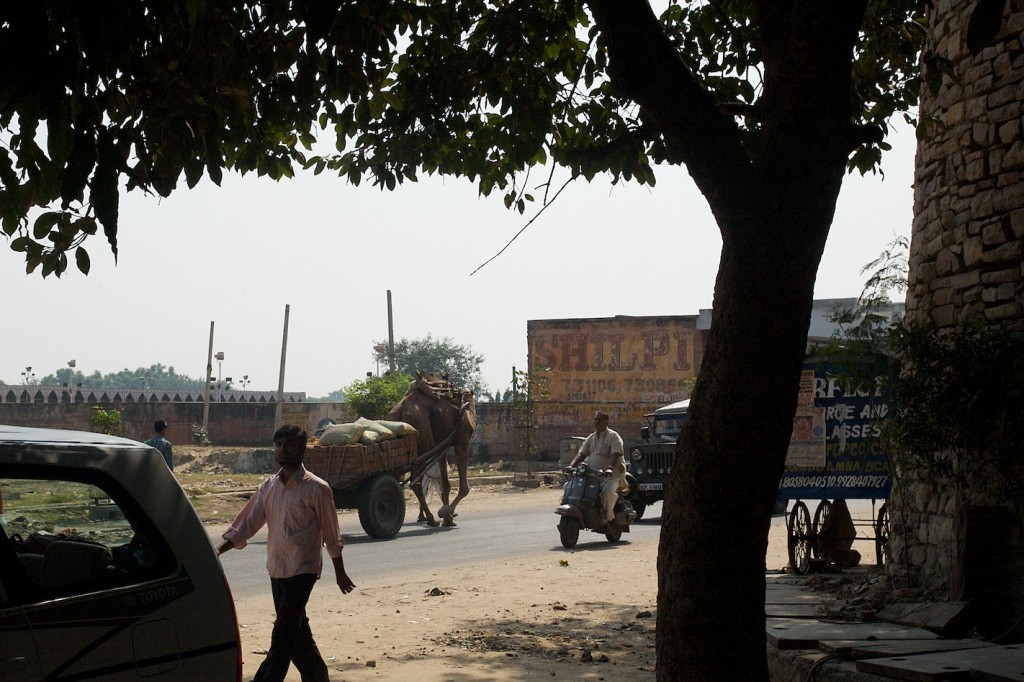
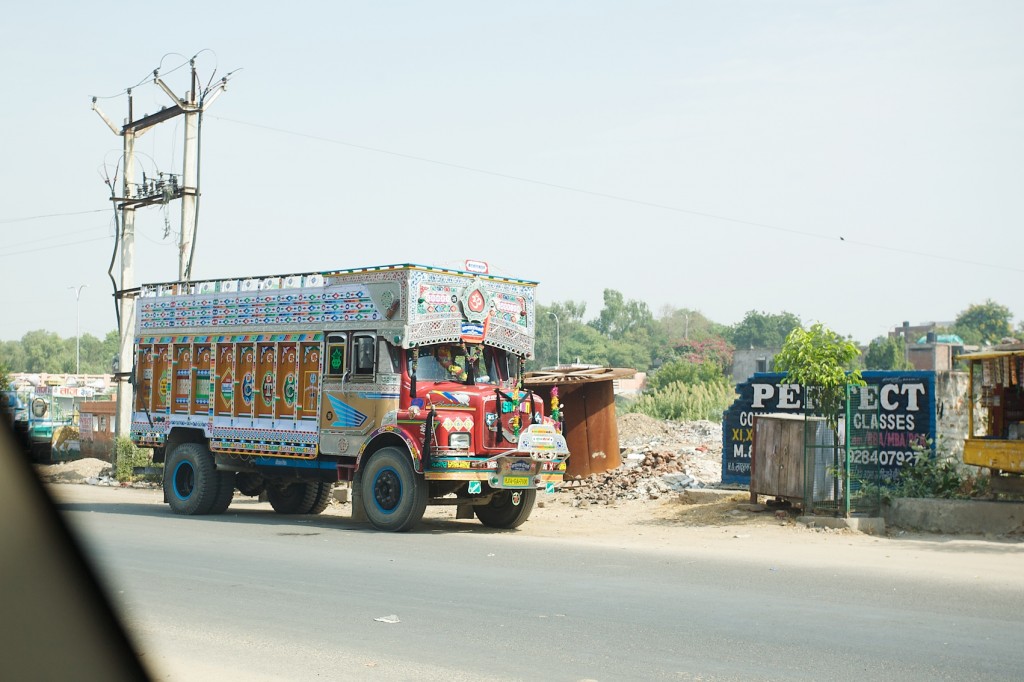
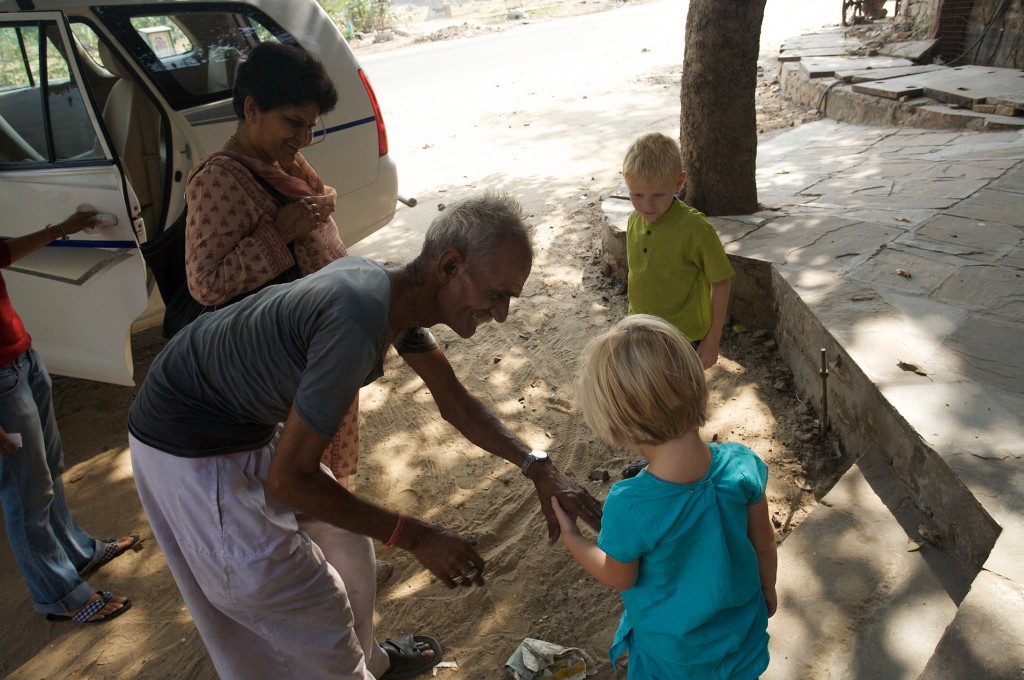
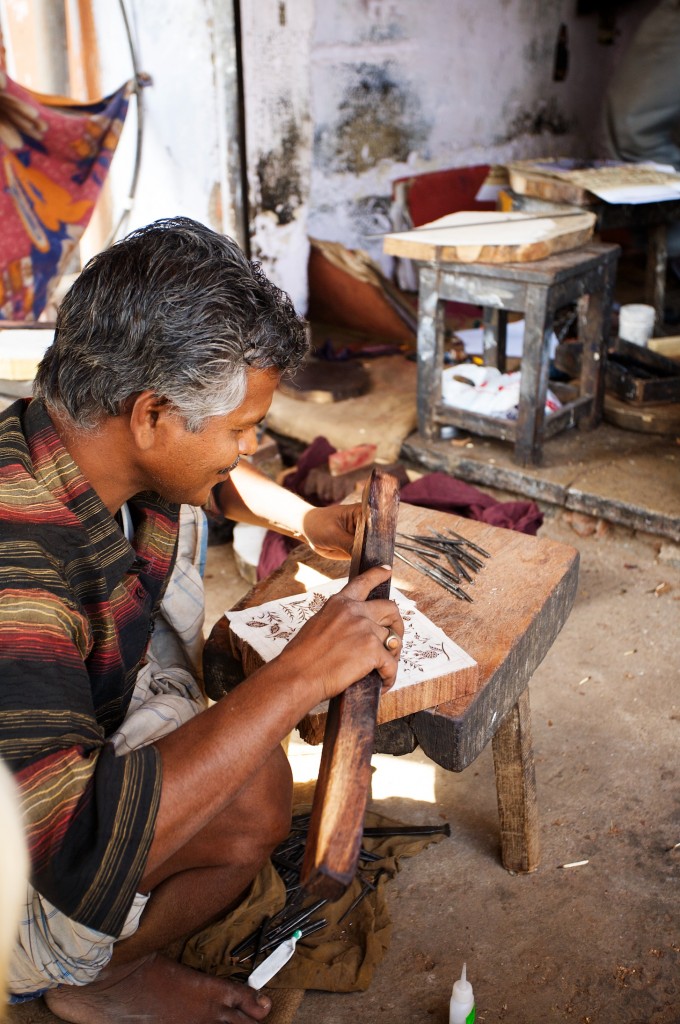
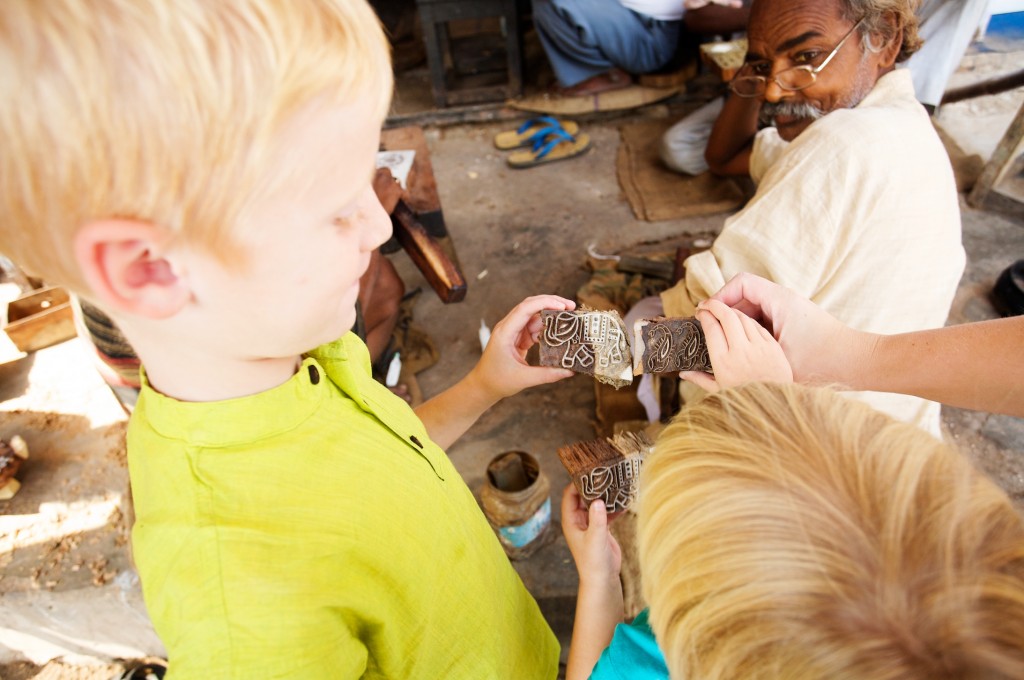
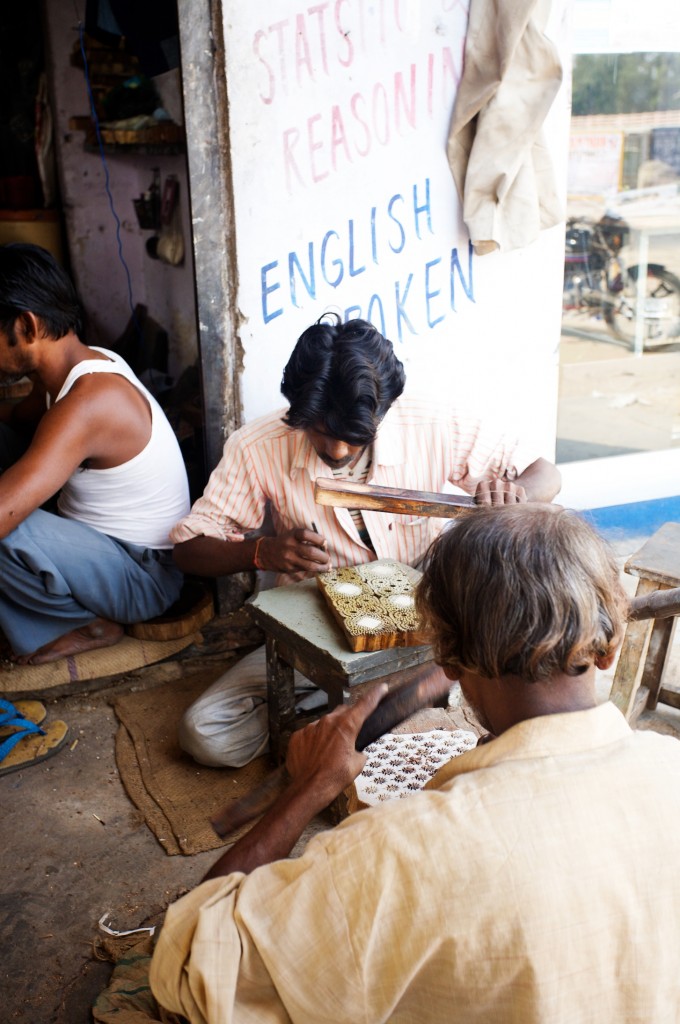
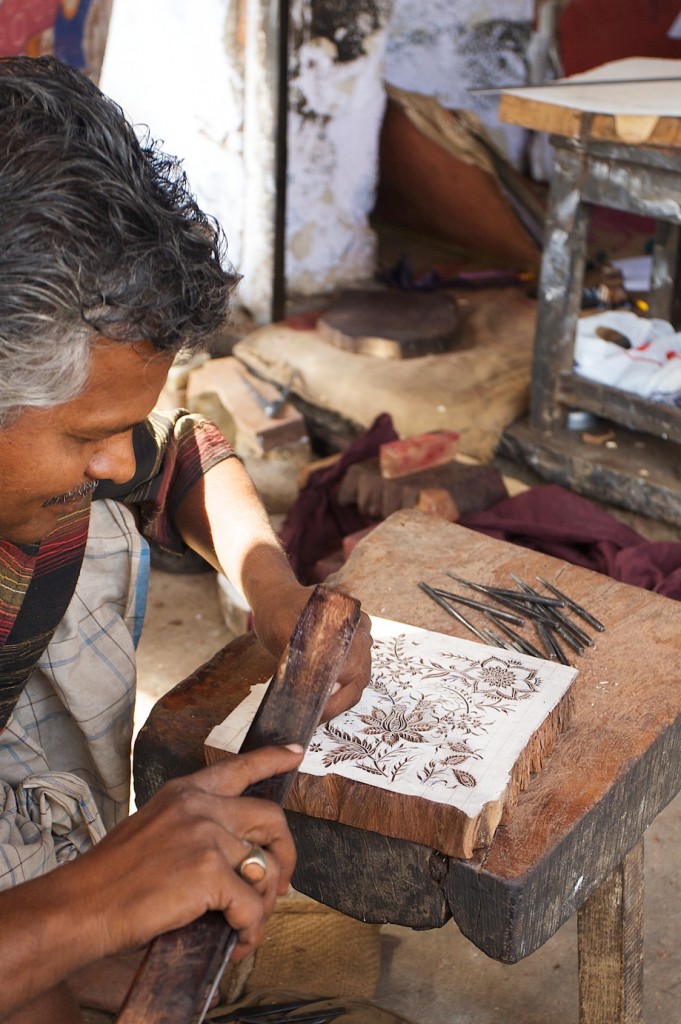
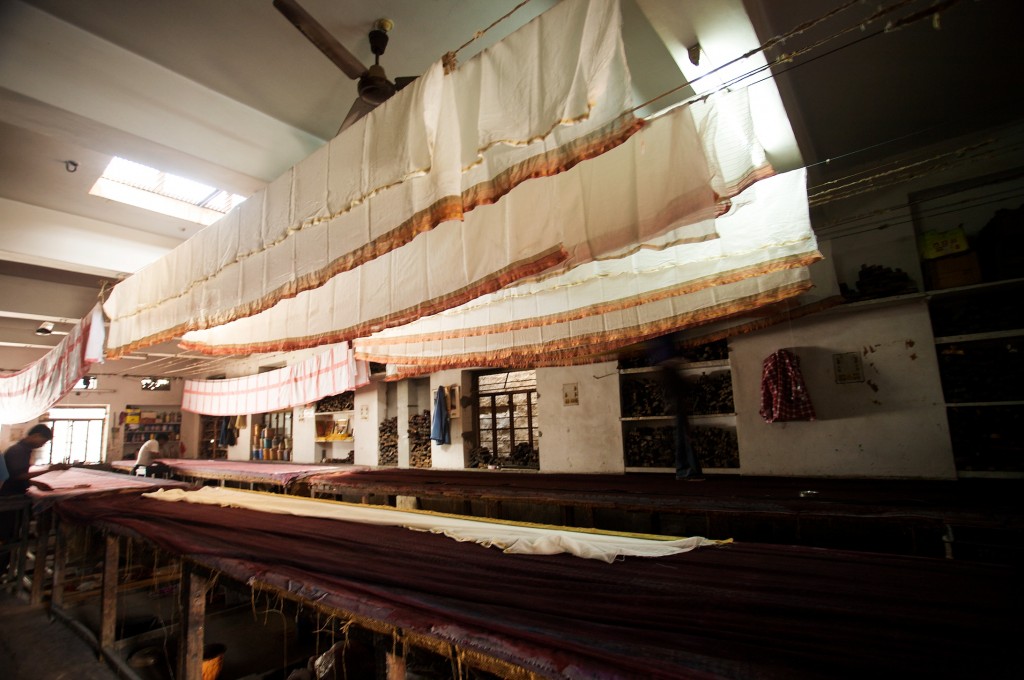
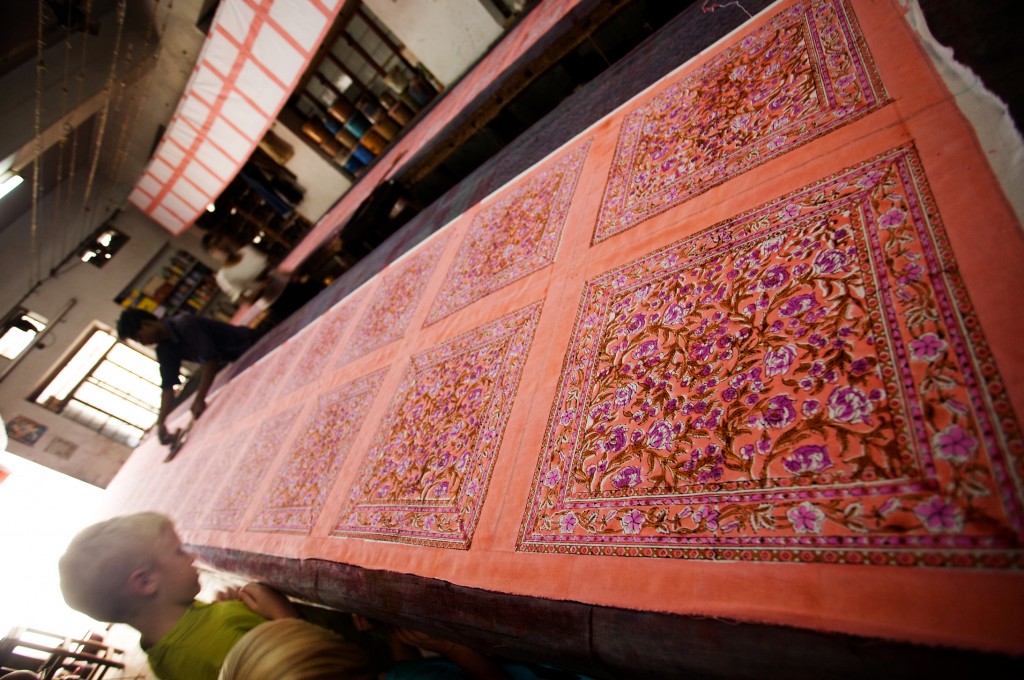
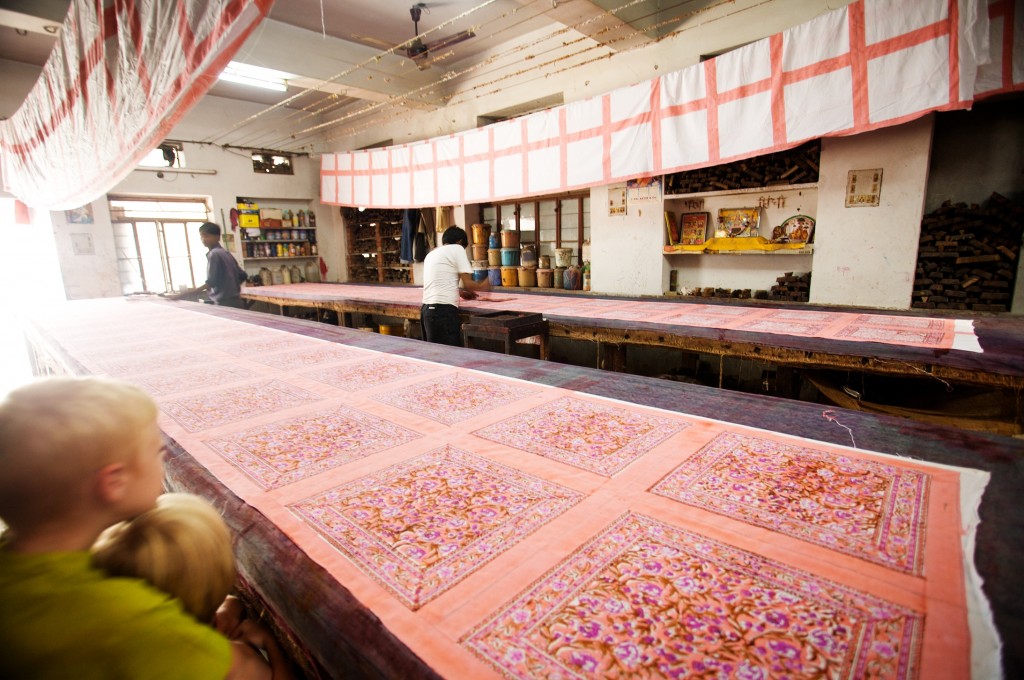
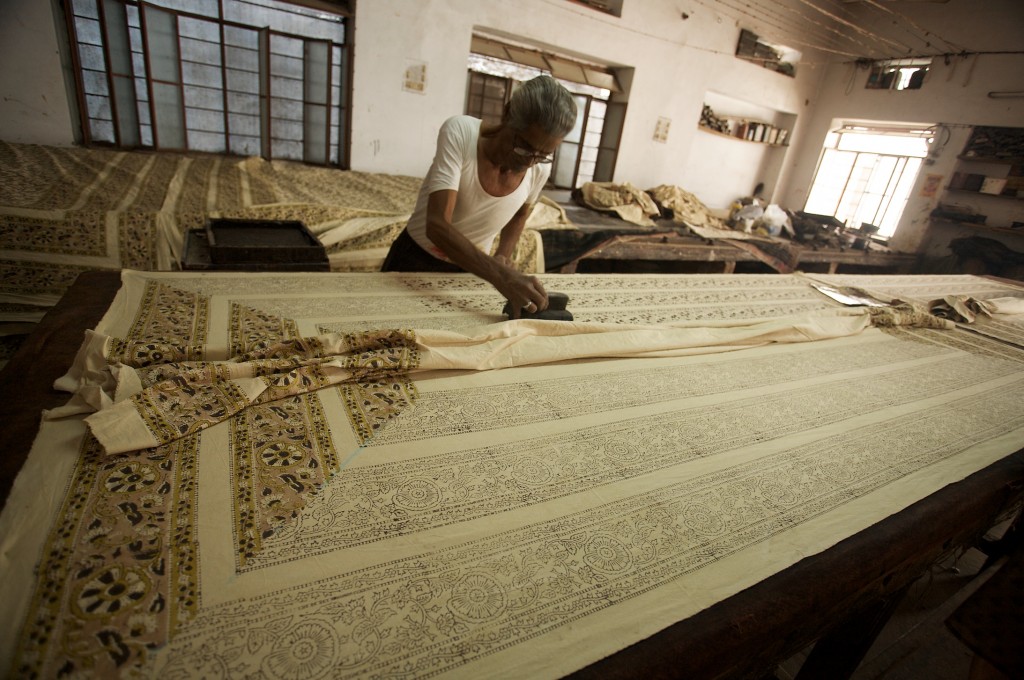
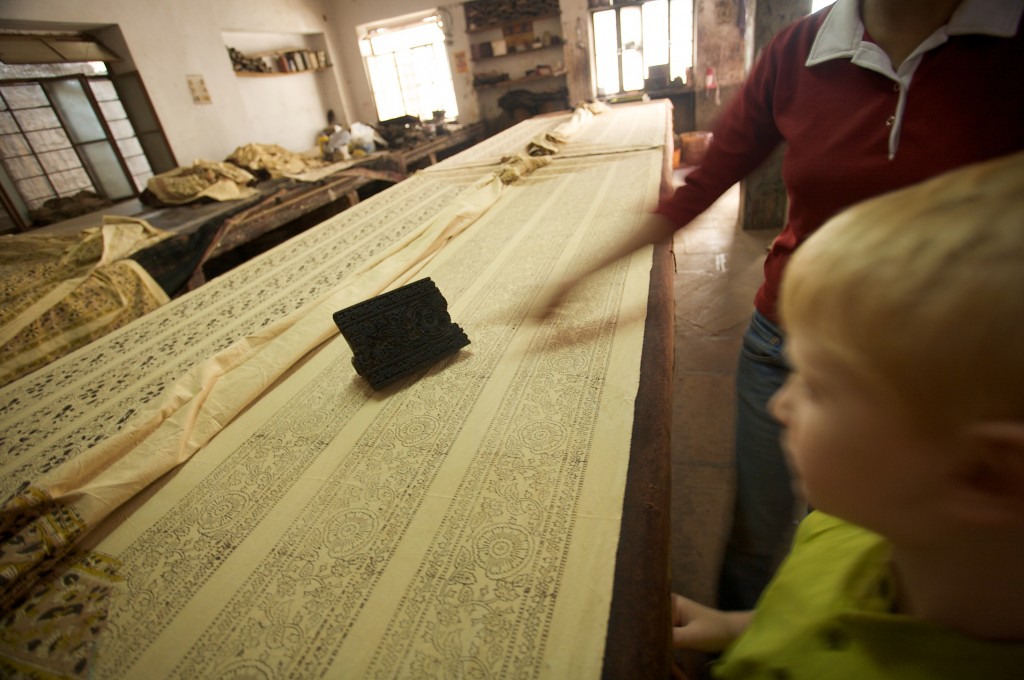
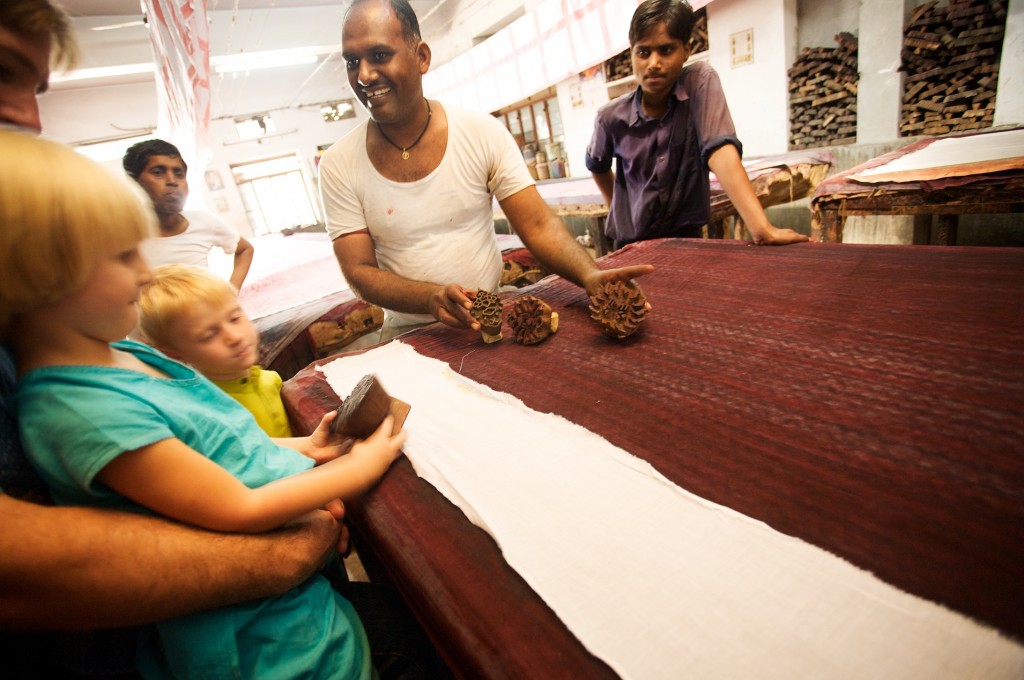
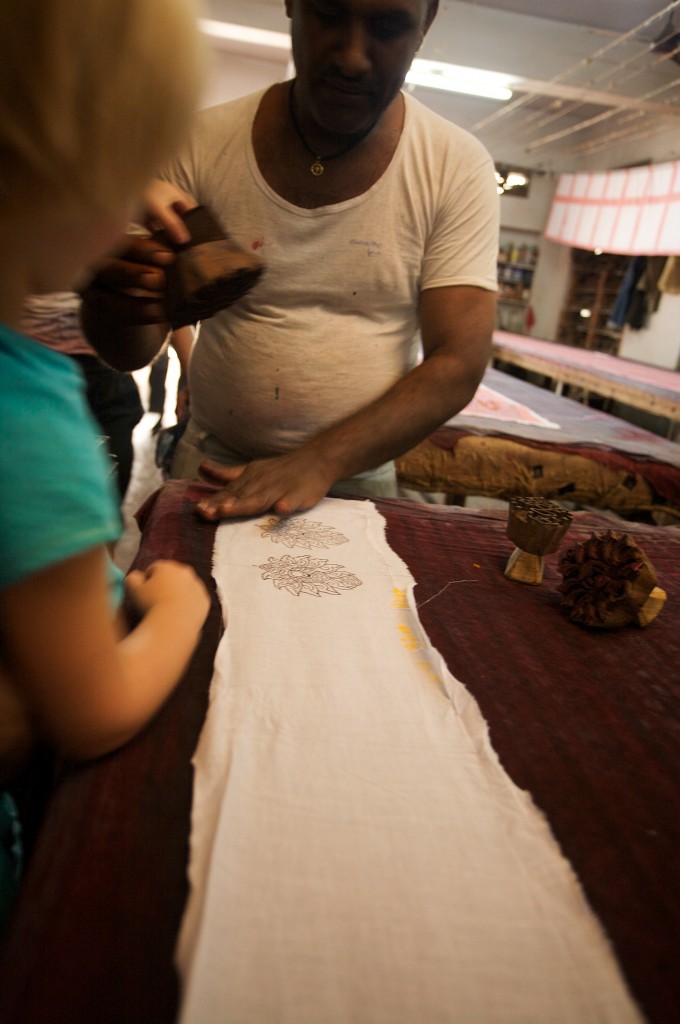
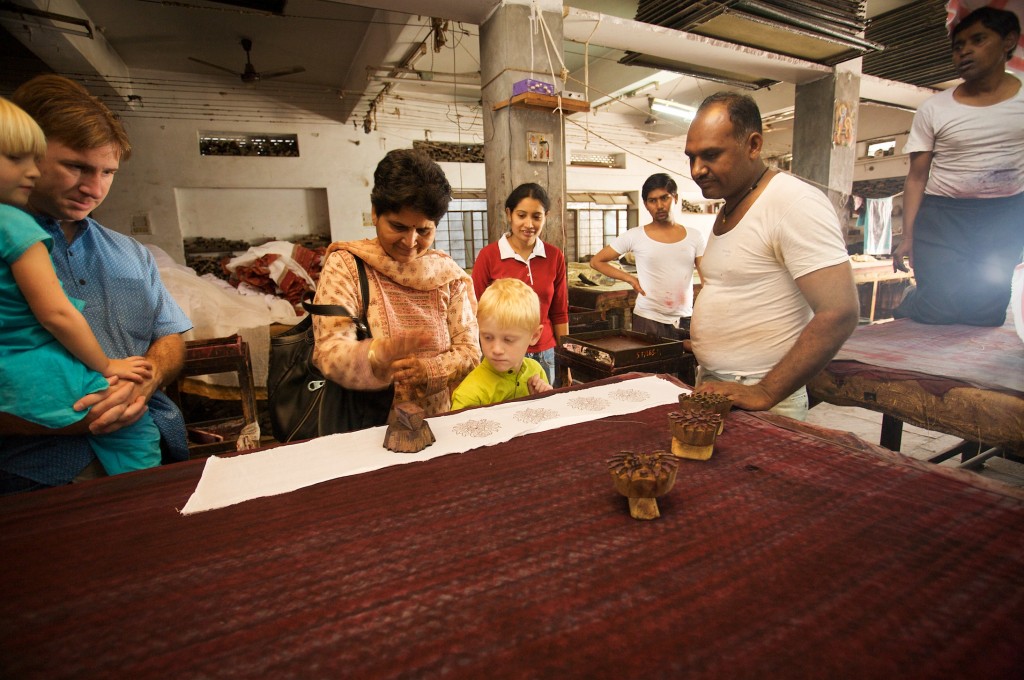
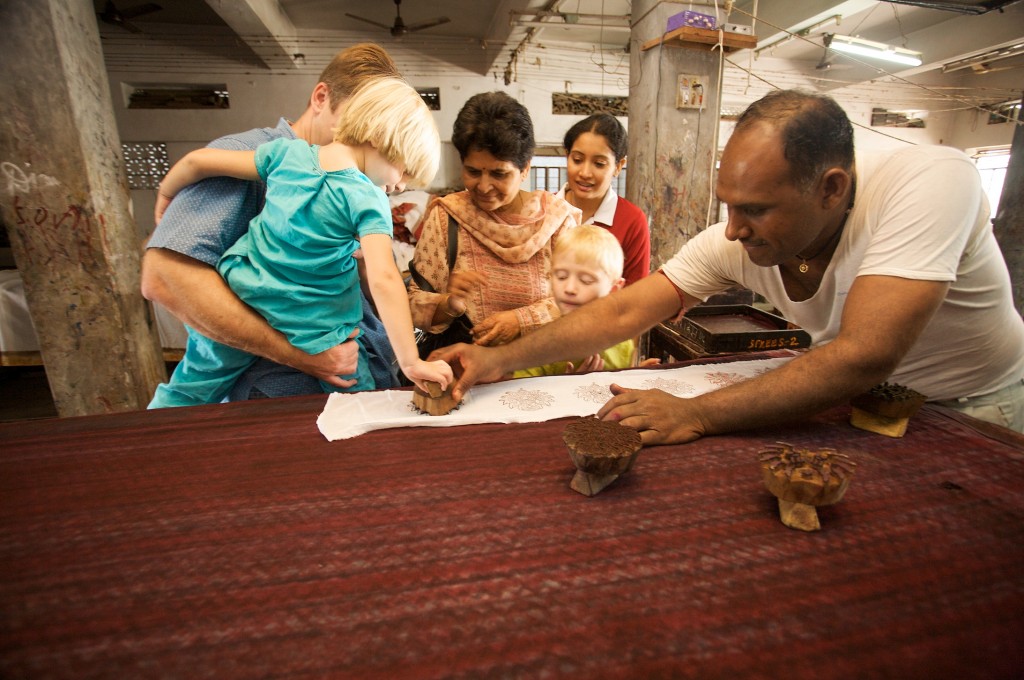
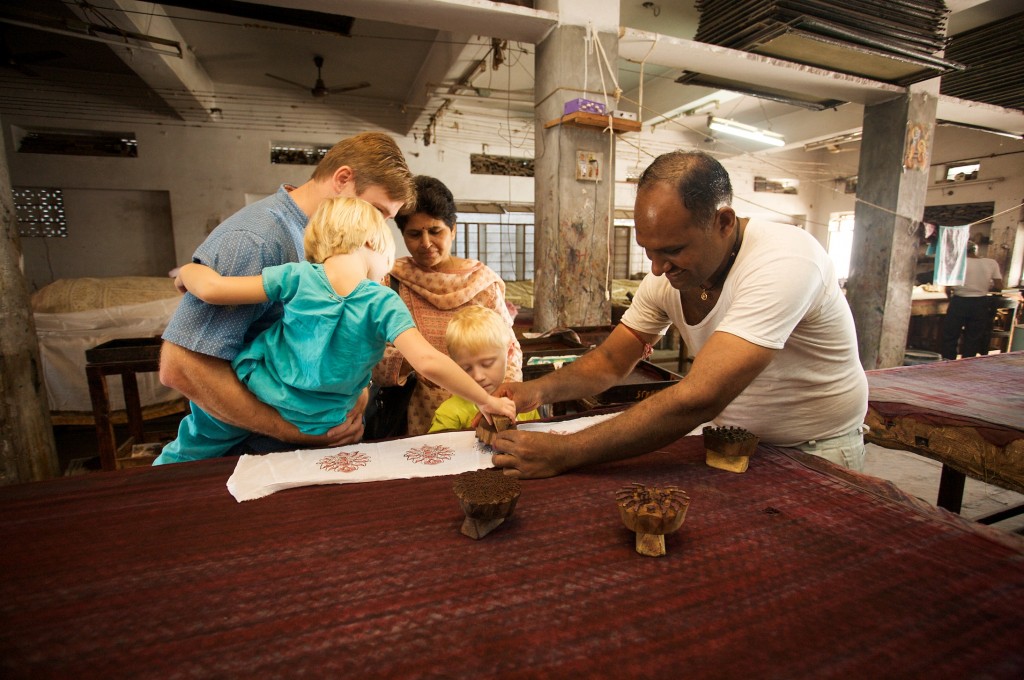
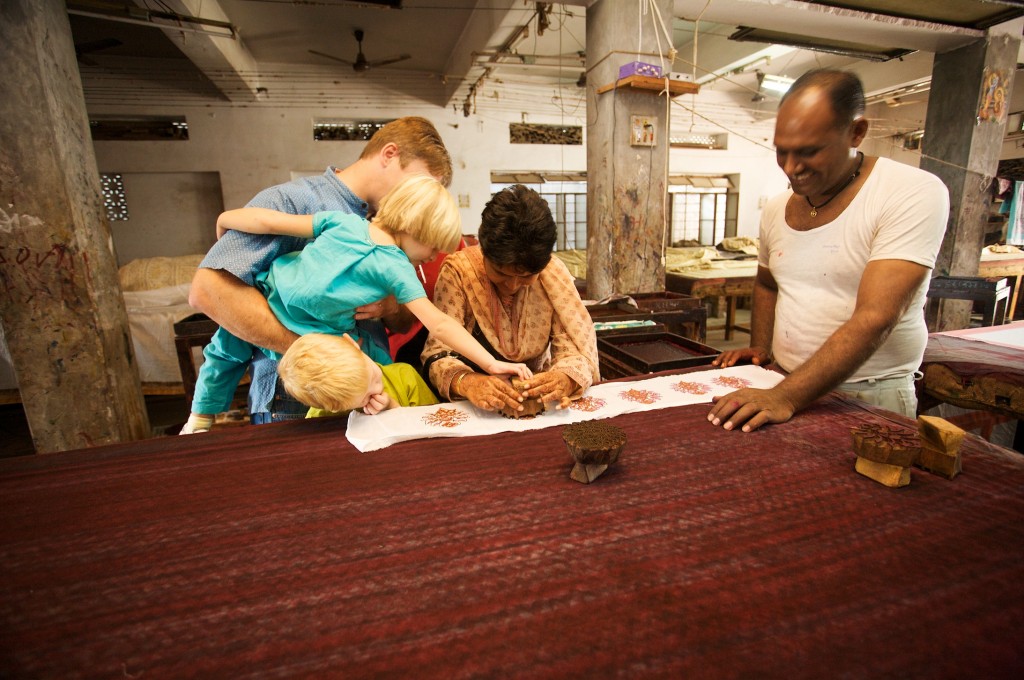
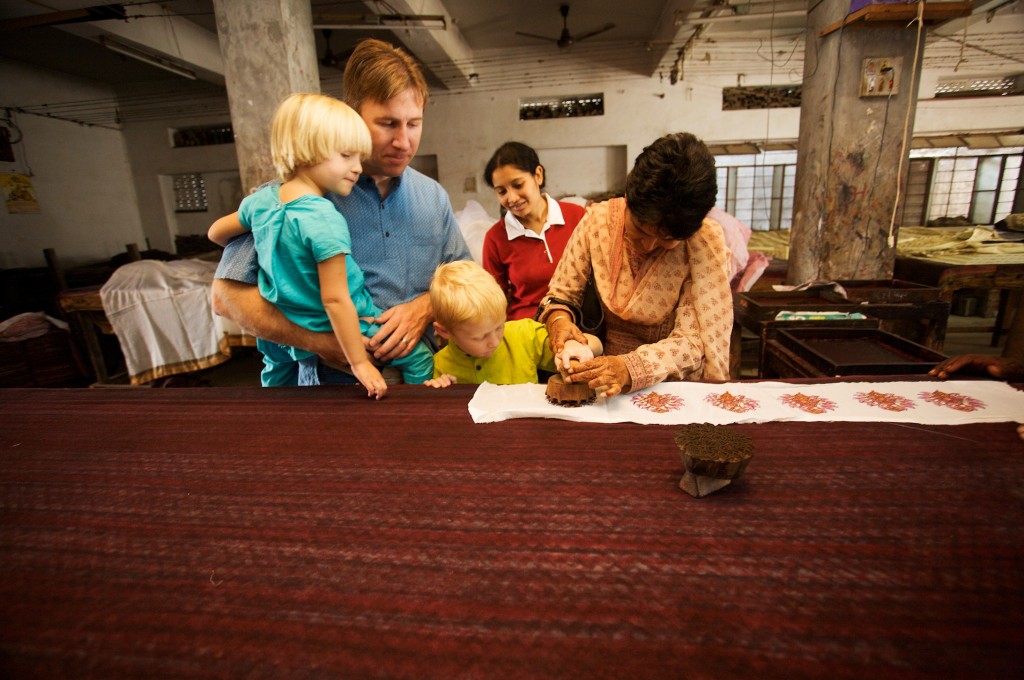
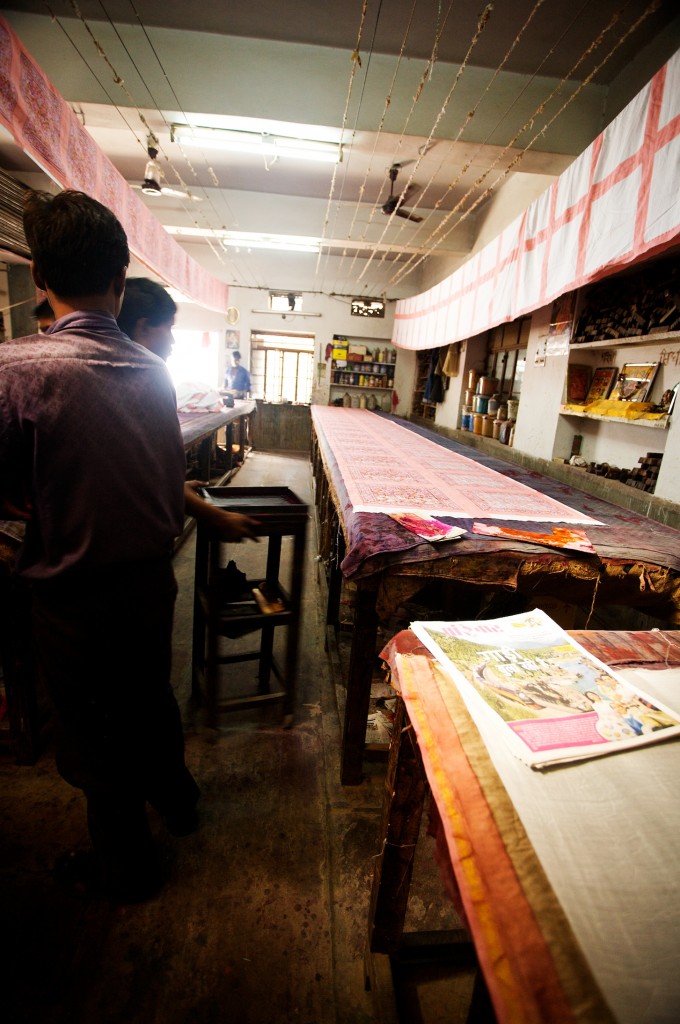
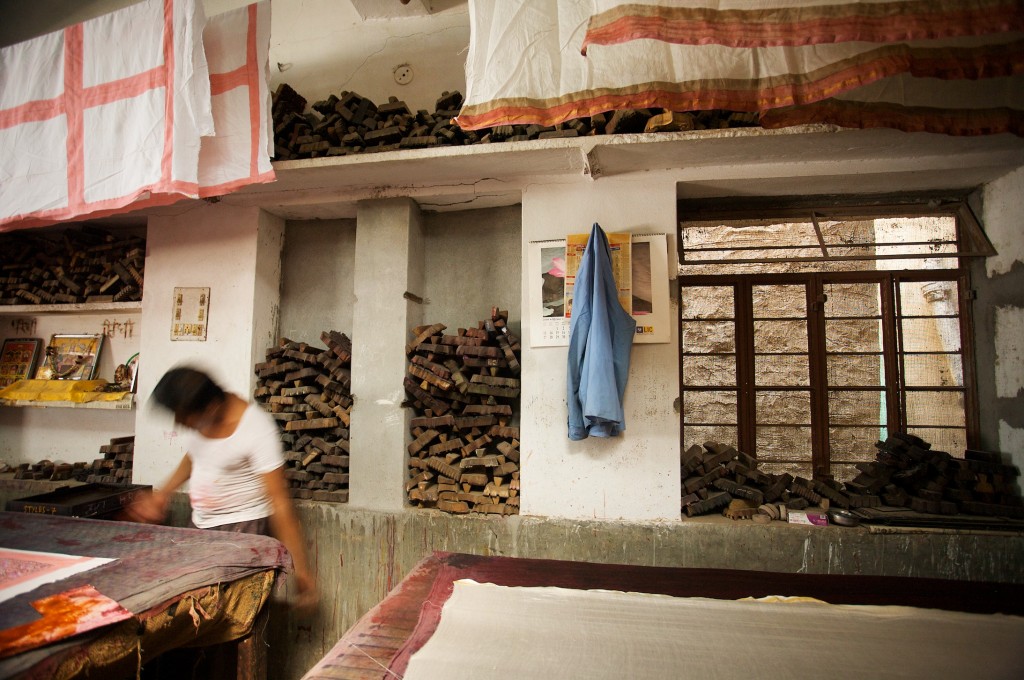
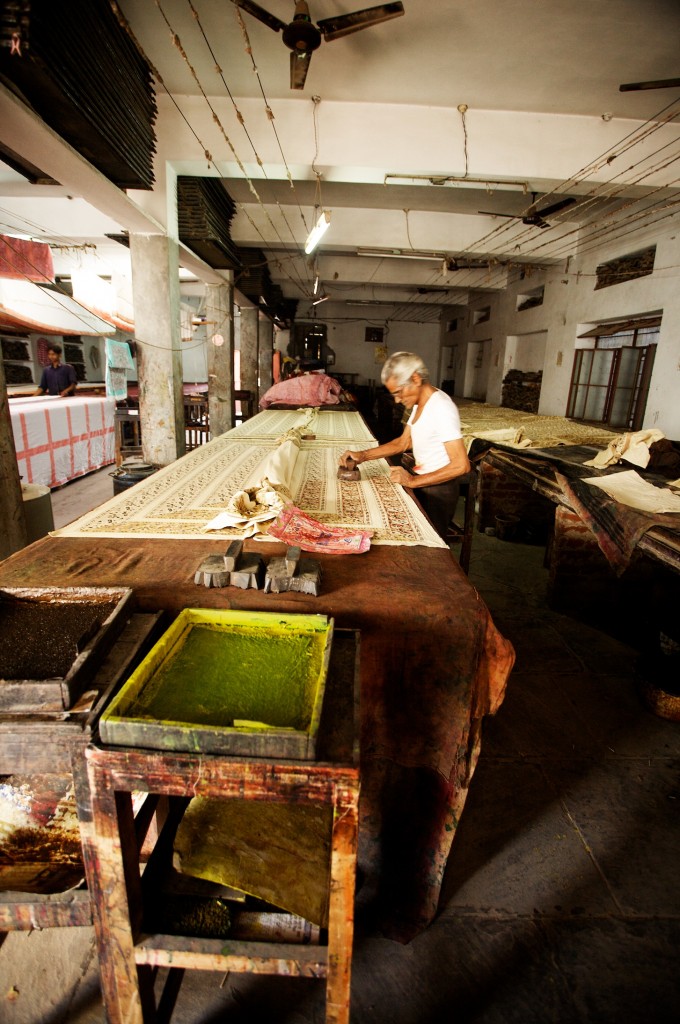
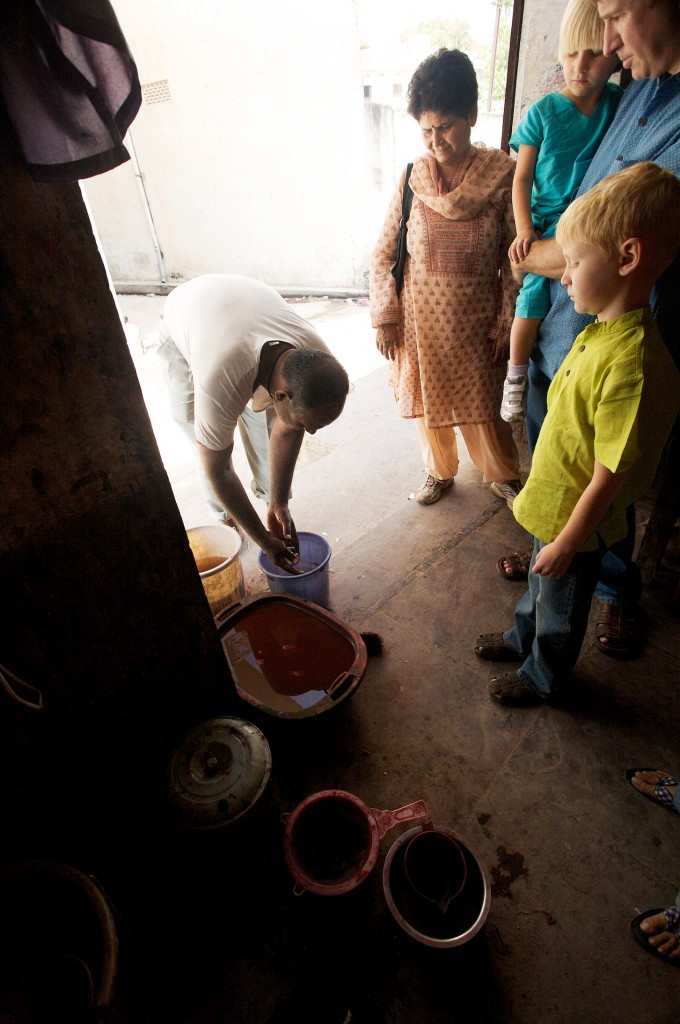
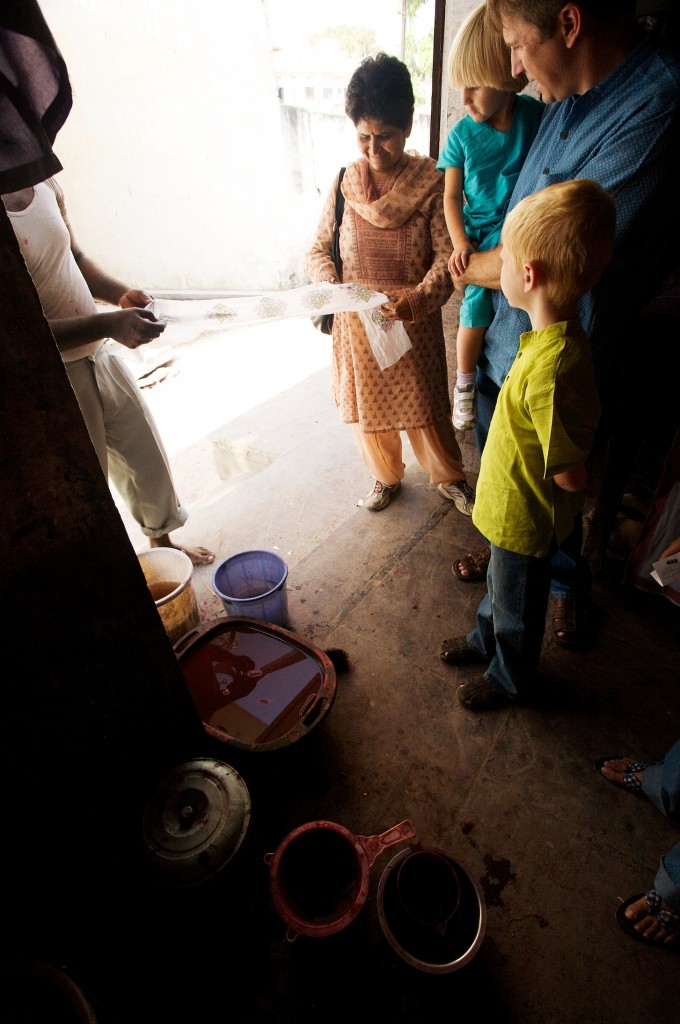
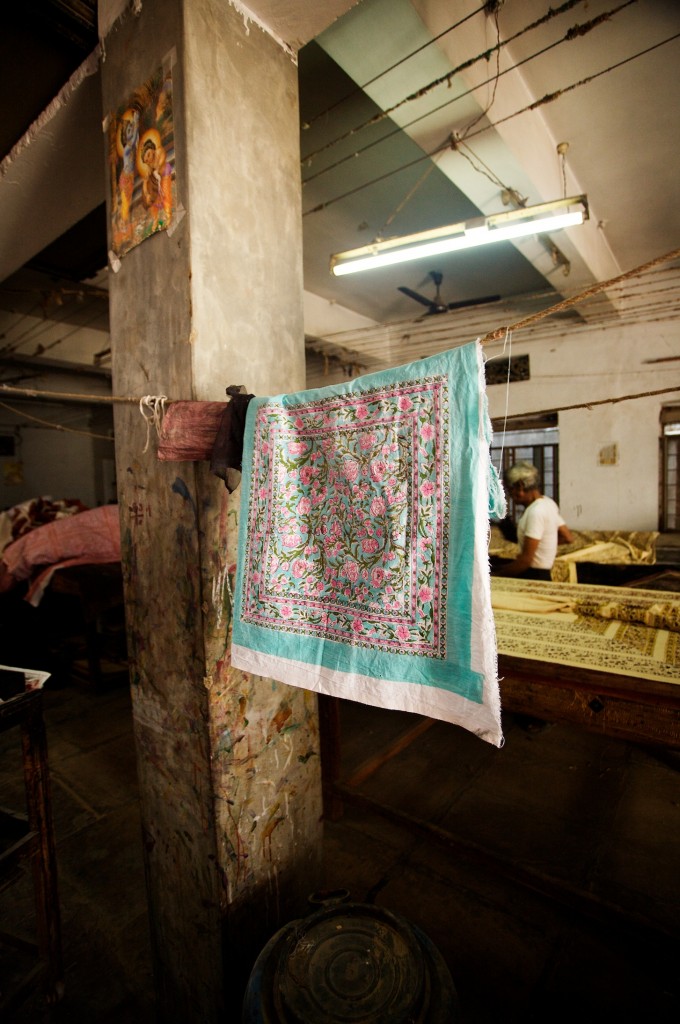
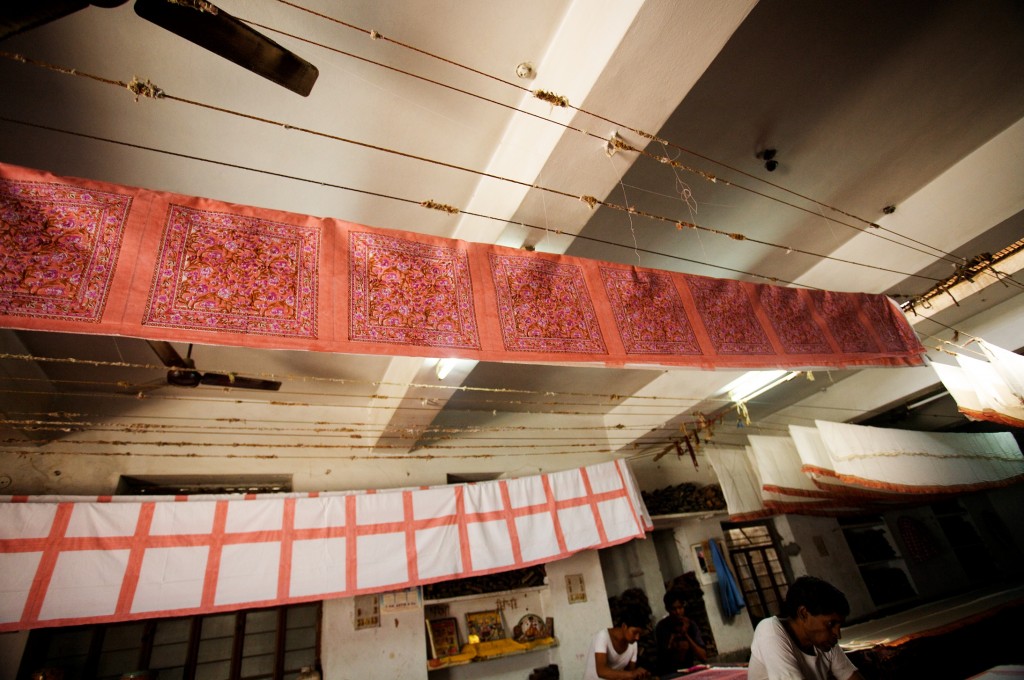
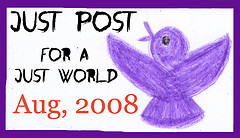
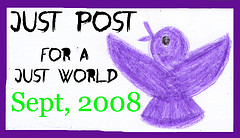
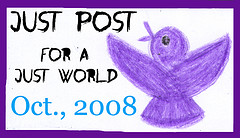


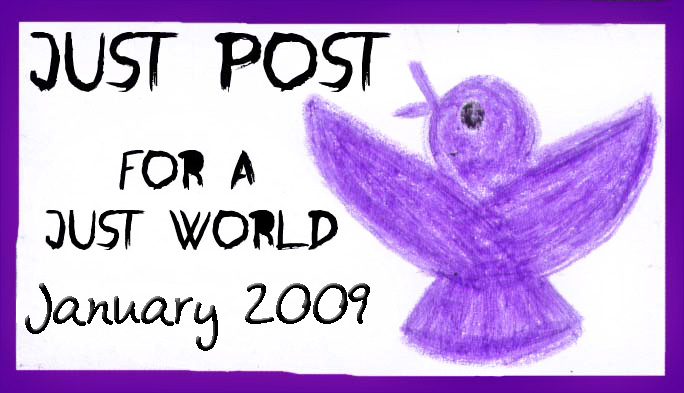
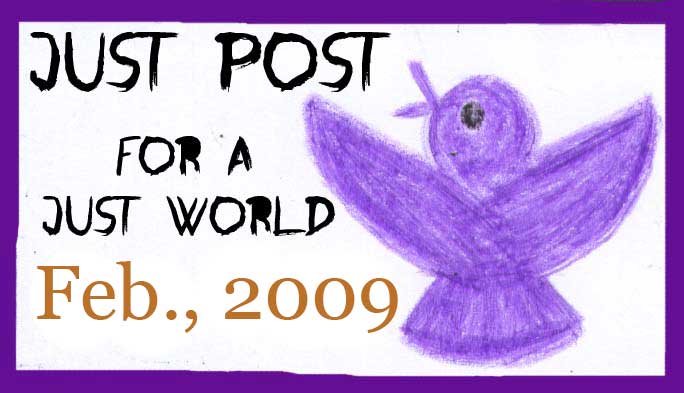

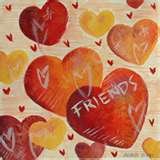
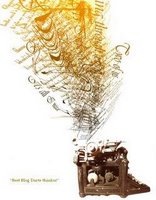





kitty | 07-Dec-10 at 1:47 am | Permalink
This is so fascinating. I never would have thought they use such small stamps, wow, what artisans these people are.
And how welcoming and kind of them to show you every step.
Lee | 07-Dec-10 at 4:22 am | Permalink
What a great experience! I’m sending your post to my friend who is a print-maker. She will be so interested in these! You are such a cool mom…
alejna | 07-Dec-10 at 6:37 am | Permalink
Wow, this was fascinating and impressive. I’m so happy that you and your family got to have this experience. Thanks for sharing it with us!
Lee Larsen | 08-Dec-10 at 6:47 pm | Permalink
cool! thanks for sharing!
Amber | 09-Dec-10 at 10:24 pm | Permalink
Wow! That is so amazing. There is so much art in those pieces. I’m not sure I would want to ruin them by using them.
nonlineargirl | 09-Dec-10 at 10:57 pm | Permalink
Wow, how lucky to be able to do that and how wonderful of the various artisans to take this time with you and welcome you into their work spaces!
Cold Spaghetti :: Paper-Making | 10-Dec-10 at 11:12 pm | Permalink
[…] exploring the world of block-printing, we went to another part of the little town, where paper is […]